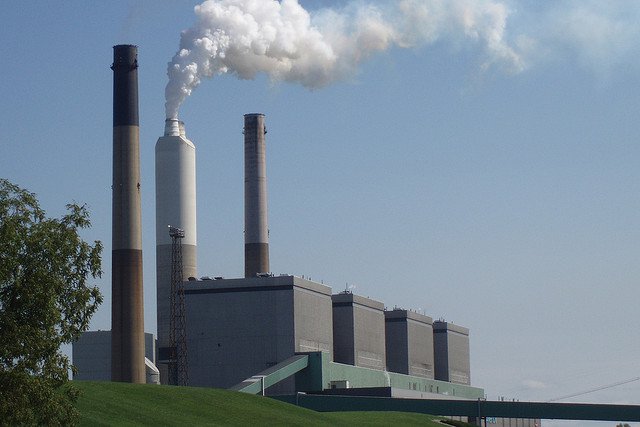2020 Carbon Dioxide Emissions From Northwest Power Plants Were Lowest In Decades
- January 18, 2022
- John Harrison

In 2020, carbon dioxide emissions from Pacific Northwest power plants that burn coal and natural gas totaled 45.64 million metric tons, the lowest in at least 25 years and a roughly 20-percent decline from emissions in 2019 (2020 is the latest year for which emissions data is available). The data reflects emissions from electricity generation at power plants and does not account for ‘upstream’ emissions from, for example, coal mining and gas production.
There are several reasons for the emissions decline, said Gillian Charles, senior policy analyst in the Council’s Power Planning Division, at the January Council meeting. Aging and inefficient coal-fired power plants are being retired, a trend that will continue over the next decade, and more natural gas is being dispatched – gas produces only about half the carbon dioxide emissions as coal. These trends will continue to contribute to lower carbon emissions, she said. Another factor in the lower emissions is the proliferation of renewable (non-carbon) sources of power generation – particularly wind and solar. Hydropower also plays a role. Hydropower is the biggest source of electricity generation – about half – in our region. In good water years there is more hydropower generation and lower emissions from thermal plants, and in below-average water years there is more thermal generation, and thus more emissions.
Overall, carbon dioxide emissions have trended down over the last seven or eight years, even in years with similar hydropower output. For example, emissions dropped about 20 percent from 2013 to 2020 in very similar water years, Charles said. The continuing decline, even in similar water years, suggests that the key factor for this trend is that less power is being generated with coal. (See the emissions chart on our Power Supply page.)
“On average, coal generation has been declining while natural gas generation has been increasing,” she said. “Since 1995, more than 7,700 megawatts of new natural gas generation has been brought online in the Northwest. Overall, generation from coal and natural gas has increased over the last 25 years, but coal generation has been declining as natural gas generation increased.”
Since 1995, coal has accounted for about 78 percent of the region’s carbon dioxide emissions from power plants; in 2020, coal accounted for about 60 percent.
Does this trend imply that future emissions will continue to decline? Not exactly, she said. That’s because hydropower generation goes up and down from year to year, and in below-average water years there still will be more thermal generation to meet demand for power.
Over the next decade, some 4,400 megawatts of coal-fired generation is expected to be retired, Charles said (see the coal retirements map on our Power Supply page). Some of this generation may be replaced with existing natural gas and new renewable resources.
“As gas dispatch increases and coal decreases, this will contribute to lower future emissions from power plants that use fossil fuels,” she said.
A somewhat similar downward trend in carbon dioxide emissions has been evident across the United States since 2007, she said, and pretty much for the same reasons – more gas and renewables, less coal, even though elsewhere in the country there is less hydropower than in the Northwest.
And the future – actually the data from last year?
“Early analysis indicates that 2021 emissions from the generation of electricity in the Northwest will likely continue to decline over the next few years,” Charles said. But, she added, that will depend on how the generation from retiring coal plants is replaced, how much new renewable energy comes online (thousands of megawatts are planned), and whether water years lead to more or less hydropower. However, the trend is a bit different for the country as a whole, she said. Emissions are likely to increase, thanks to an uptick in the economy as the pandemic eases.


